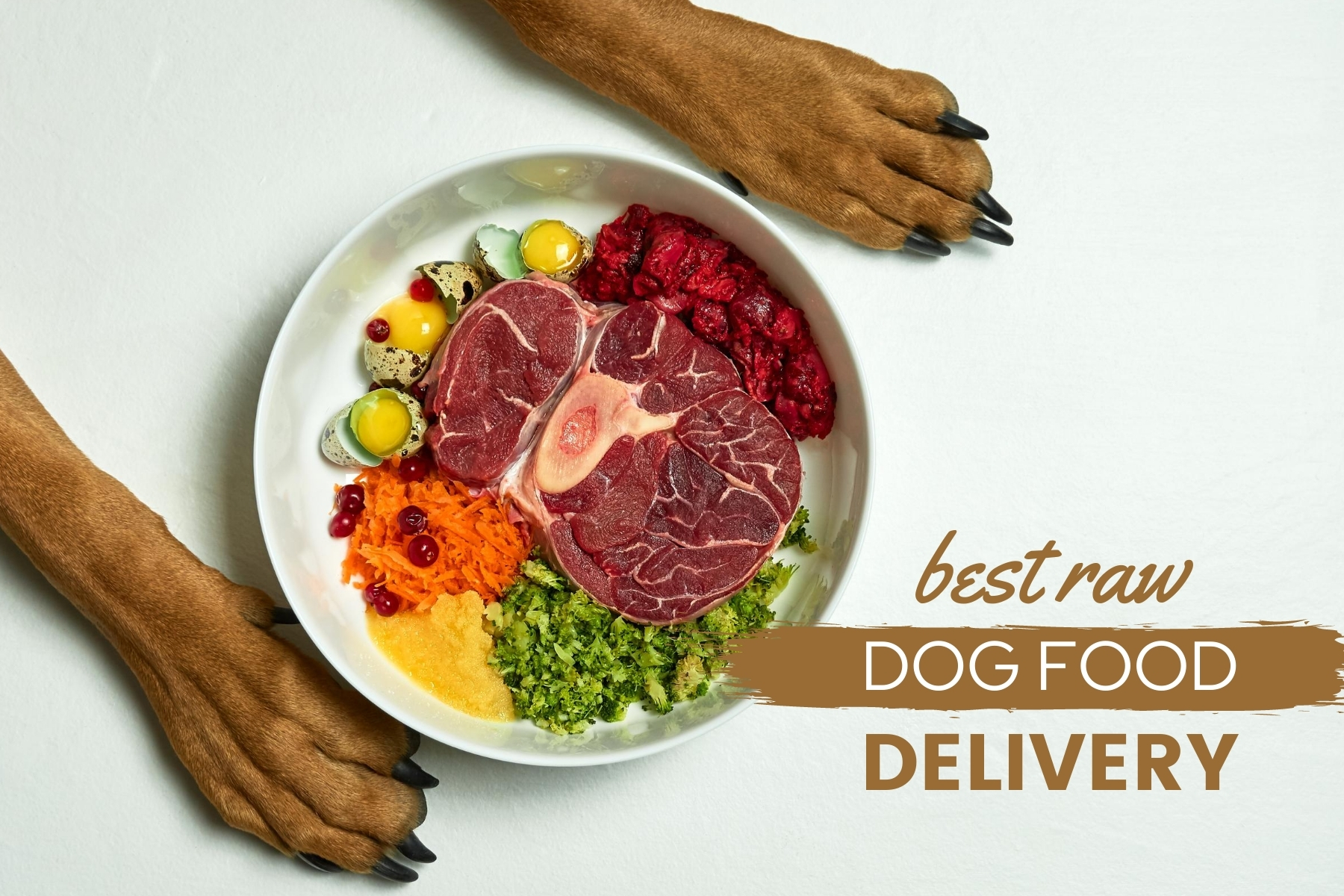Your dog deserves the best! But it can be hard to find the best raw meat for dogs at an affordable price. so where should you start? …
My husband and I can’t say the word “chores” without our dogs running to the door so they can help!
We’re lucky to be able to raise some of our own farm animals for food (for ourselves and our pets). But we count on butchers to process our ducks, chickens, goats and sheep.
Beef is a large part of most raw feeding programs, including ours. We’re not able to raise beef, just as most raw feeders probably can’t raise their own pet food. But we have a wonderful farm near us for organic grass-fed beef and raw milk.
They’ve used many different butchers over the years for their slaughtering. Farmers can’t slaughter their own animals so they use custom processing services. This is when a butcher shop does the slaughtering and cutting for them.
The farmer typically offers a quarter, half or whole animal. The customer pays the farmer the agreed price per pound of hanging weight. The farmer then pays the butcher for cutting and slaughter costs.
If you can do it this way, you’ll likely find the total of these two payments is much less than other sources. They’re much cheaper per pound than retail cuts, commercial frozen raw … or buying through raw pet food brokers.
Finding A Farmer
So, how can you find a farmer to sell you their meat? Start by checking …
- Organic directories
- Farmers markets
- Farm co-ops
- Food co-ops
- Butcher shops
This can get you some names of farms, and sometimes, referrals. Online raw feeding forums may also be helpful. Check your state Department of Agriculture too; some states offer directories of farmers. For example, MN Grown is a division of the Minnesota Department of Agriculture. They offer advertising to their members for an extra fee.
Ask These Questions To Find The Best Raw Meat For Dogs
Be ready with questions so you can find a farmer who meets your expectations. You want to find a farmer who offers the best raw meat for dogs. Here are some of the things you might want to ask about:
- Are the animals pasture-raised? (That’s important for omega-3 and vitamin content.)
- What do they eat?
- How much space does each animal have?
- Was the animal born on your farm or bought from elsewhere (if so, at what age)?
- How old are the animals when slaughtered?
- Is your property organic? Or do you use herbicides, fertilizers or pesticides?
- Do you feed genetically modified (GMO) alfalfa or hay?
- These questions will help you assess the quality of the meat you’ll be buying. The questions about age are because you won’t want to give your dog bones from an older animal. They can be too hard for many dogs to chew and digest.
- RELATED: Raw Feeding Dogs: 10 Simple Rules To Get Started …
- How To Cut Your Raw Dog Food
- Now that you’ve found your farmer, what’s next?
- I included more items on the form than you might see. Most butchers won’t deal with the tripe. And strangely enough, many butchers don’t know what the gullet is! But these parts are nutritious and delicious for raw fed dogs! So be sure to ask about them.
- Be prepared to explain your needs. They don’t get these requests very often. Most people want to eat steak and hamburger, so they waste the rest of the animal!
- DIY Butchering
- This may not be for everyone, but my husband and I often harvest the parts of the cow or steer the butcher leaves. Our farmer has the animals humanely shot on the premises to lower their stress levels.
- The butcher often leaves the innards there so we can take the tripe and other leftover organs … like the tongue, trachea and gullet.
- Meal Planning For Your Dog
- It takes some planning to have a smooth feeding routine. My dogs hear the sound of butcher paper unwrapping no matter where they are!
- Here are some ways I simplify the process …
- I make up appropriately-sized packages of muscle meat, organ mix and raw meaty bones for the freezer.
- I often partially thaw bigger pieces of muscle meat. This includes heart or tongue. Then, I cut them into one ounce pieces. (They’re easier to cut if they’re partially frozen).
- I spread the cut pieces out flat on the butcher paper to refreeze. That way, they don’t stick together when I put them back in a large container.
- Another helpful practice is partially thawing organs and cutting them into 1 oz pieces … or blending them together. I often include a little banana for prebiotic power.
- I try to have each day’s meals ready thawed in the refrigerator.
- For my dogs’ breakfasts, I mix the muscle meat pieces and organ blend alone. Then I add a small amount of pulverized vegetables. (You can grow your own or buy organic.) I also ferment the veggies in whey … for the probiotic boost.
